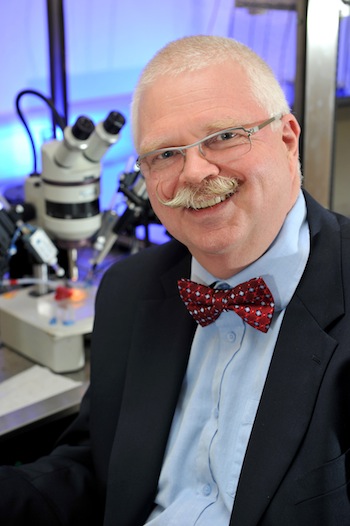Professor co-edits new health journal
October, 2013

Dr. Büsselberg, Professor of Physiology and
Biophysics at WCMC-Q.
The 2013 edition of a new open access health journal co-edited by WCMC-Q’s Dr. Dietrich Büsselberg has been published on Qatar Foundation’s QScience platform.
The Journal of Local and Global Health Science is a peer-reviewed, international journal that publishes both basic and applied research related to health. The journal was launched in in late 2012 and aims to be a vehicle for the improvement of public health in communities around the world through the promotion of evidence-based approaches.
Key to the journal’s identity is its commitment to view global issues in a local context, while simultaneously examining the implications local health practices have for global health, explained Dr. Büsselberg, Professor of Physiology and Biophysics at WCMC-Q.
He said: “There are many journals that cover local health issues but very few that try to place them in a global context. Similarly, there are many journals that examine global issues of public health but they do not explain their effects on local healthcare.
“We felt this link between global and local health issues was missing, and this is why we created the Journal of Local and Global Health Science.”
The journal publishes articles in a wide variety of fields, such as environmental, educational and toxicological aspects that influence both human health and the health of the ecosystem. The current issue features articles on lead neurotoxicity, the effects of pollution on health outcomes, the impact of day length and artificial lighting on health in northern and southern latitudes, and the global problem of breast cancer and therapy resistance.
The Journal of Local and Global Health Science is edited in partnership with Dr. David O. Carpenter, professor of Environmental Health Science and the director of the Institute for Health and the Environment at the University at Albany in New York State. The journal is published online.
Dr. Büsselberg has contributed to several of the articles in the current edition, including a review of the effects of lead on synaptic transmission. The neurotoxic properties of lead have been an enduring area of interest to Dr. Büsselberg since he started his PhD on the subject at the Wadsworth Center in Albany, New York in 1987.
He said: “Since my PhD I have frequently revisited the subject of lead neurotoxicity. It has been a topic of great interest to me for the past 25 years because more and more mechanisms of lead interactions have been discovered.
“For example, the research was previously focused on lead poisoning in high concentrations, which used to be a common occurrence mainly because of children eating lead-based paint that was used in many homes up until the 1970s. That type of paint is no longer used and consequently the study of lead poisoning has moved on and now focuses on much lower concentrations.”
Dr. Büsselberg said that the World Health Organization sets the tolerable level of lead concentration in the blood at 10microg/dL. However, he explained that contemporary research has indicated that lead is toxic at far lower concentrations.
He said: “Over the last few years the research has shown that even concentrations lower as 2microg/dL can be harmful. Even this low concentration can impair learning and brain function.”
Dr. Büsselberg’s review article in the current edition is entitled Lead (Pb2+) neurotoxicity: Ion-mimicry with calcium (Ca2+) impairs synaptic transmission and was written in parternship with Ana-Maria Florea, Jasmin Taban, Elizabeth Varghese, Blane T. Alost and Stacy Moreno. The article illustrates “how Pb2+ neurotoxicity is associated with its ability to partially mimic the function of Ca2+ and modifies synaptic transmission pre- and post-synaptically.” Essentially, lead molecules disrupt synaptic function by binding to sites meant for calcium molecules.
Lead enters the human body by absorption through the skin, inhalation of polluted air, and consumption of contaminated food and water. Lead poisoning can cause brain damage to the prefrontal cerebral cortex, hippocampus and cerebellum, which leads to a variety of neurologic disorders, most notably impaired learning and memory formation.
The online version of the article illustrates the chemical processes involved in lead poisoning at the synaptic level with a series of animations.
Dr. Büsselberg said: “The processes are rather complex so the animations are a far more effective way to explain them than static diagrams. The aim is to make the material comprehensible to as many people as possible.”
Crucially, the journal is open-access, which means it can be read completely free of charge by anyone, anywhere in the world. Unrestricted use, distribution and reproduction in any medium are permitted, provided the article is properly attributed.
Dr. Büsselberg said: “The fact that the journal is open-access is a great strength. It is often very expensive to access academic articles and this represents a considerable barrier to research. By removing this barrier we allow for a free flow of information and ideas among the widest possible audience.”
The QScience platform also makes it easy for authors to submit manuscripts to the Journal of Local and Global Health Science by electronic means. The system allows authors to track the status of their manuscript and shortens the time needed for processing manuscripts through peer review.
To view the Journal of Local and Global Health Science visit QScience.com.
